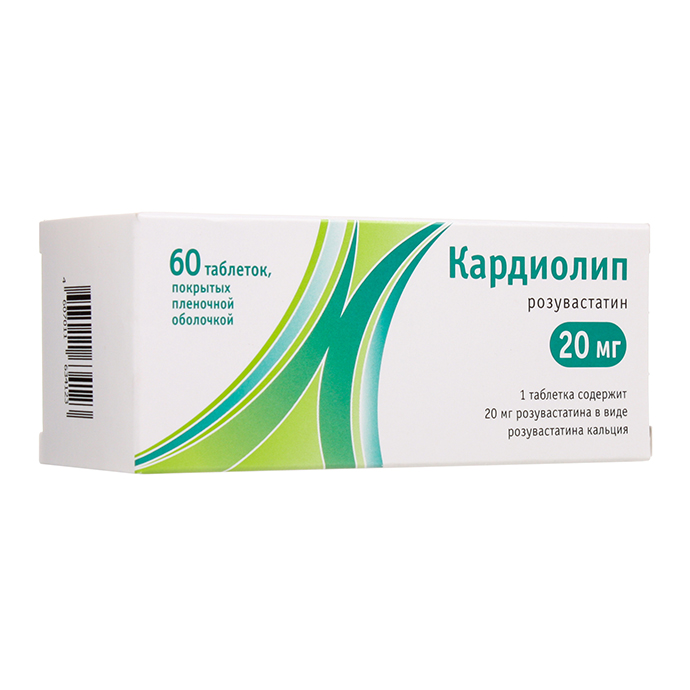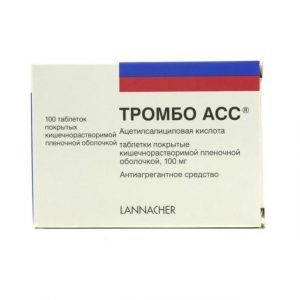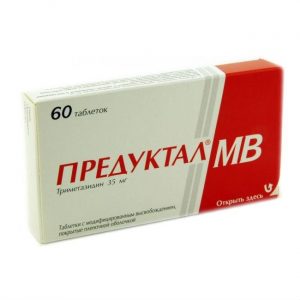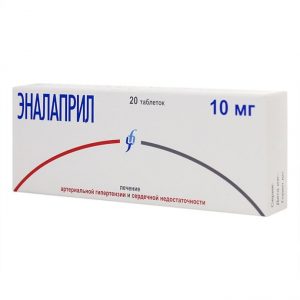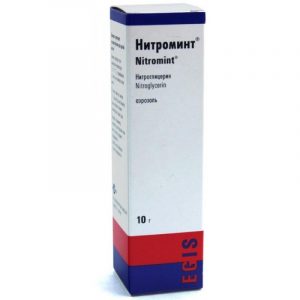Description
Release form
Film-coated tablets
Pharmacological action
Cardiolip is a lipid-lowering drug, a selective competitive inhibitor of HMG-CoA reductase. Effective in adult patients with hypercholesterolemia, with or without hypertriglyceridemia (regardless of race, gender or age), including in patients with diabetes mellitus and familial hypercholesterolemia.
The additive effect is observed in combination with fenofibrate (in relation to a decrease in the concentration of TG) and nicotinic acid in lipid lowering doses (in relation to a decrease in the concentration of HDL-C).
Indications
– Primary Fredricksen hypercholesterolemia (type IIa, including familial heterozygous hypercholesterolemia) or mixed hypercholesterolemia (type IIb) as a supplement to the diet, when diet and other non-drug methods of weight loss (exercise).
– Family homozygous hypercholesterolemia as a supplement to diet and other lipid lowering therapy (e.g., LDL apheresis), or in cases where such therapy is not effective enough.
– Hypertriglyceridemia (Fredricksen type IV) as a supplement to the diet.
– To slow the progression of atherosclerosis as a supplement to the diet in patients who are shown therapy to reduce the concentration of total cholesterol and LDL-C.
– Primary prevention of major cardiovascular complications (stroke, myocardial infarction, arterial revascularization) in adult patients without clinical signs of coronary artery disease, but with an increased risk of its development (over 50 years old for men and over 60 years old for women, increased concentration of C- reactive protein (more than 2 mg / l) if available, at least one of the additional risk factors, such as arterial hypertension, low concentration of HDL-C, smoking, a family history of early onset of CHD).
Contraindications
Hypersensitivity to rosuvastatin or any of the components of the drug
liver disease in the active phase, including a persistent increase in serum transaminase activity and any increase in serum transaminase activity (more than 3 times compared with the upper limit of normal)
severe disorders renal function (creatinine clearance (CC) less than 30 ml / min)
myopathy
concomitant use of cyclosporine
in women: pregnancy, lactation, lack of adequate methods of counteraction cept
patients predisposed to the development of complications miotoksicheskih
Children up to age 18 years.
Caution:
The presence of a risk of myopathy / rhabdomyolysis – renal failure, hypothyroidism, a personal or family history of hereditary muscle diseases and a previous history of muscle toxicity with other HMG-CoA reductase inhibitors or fibrates alcohol dependence age over 65 years of age, with an increase in plasma concentration rosuvastatin racial affiliation (Asian race – Japanese and Chinese) concurrent use with liver disease fibrates in the history of sepsis arterial hypotension extensive surgery, trauma, severe metabolic, endocrine or electrolyte abnormalities or uncontrolled seizures.
Patients with liver failure: there is no data or experience with the use of the drug in patients with a score higher than 9 on the Child-Pugh scale.
Pregnancy and lactation: Rosuvastatin is contraindicated in pregnancy and lactation. Since cholesterol and substances synthesized from cholesterol are important for fetal development, the potential risk of inhibiting HMG-CoA reductase exceeds the benefit of using the drug during pregnancy.
In the event of a diagnosis of pregnancy during therapy, the drug should be discontinued immediately.
Women of reproductive age should use adequate methods of contraception.
Special instructions
Before starting therapy and throughout the treatment period, a standard lipid-lowering diet should be followed. During treatment, every 2 to 4 weeks should be monitored lipid profile and according to it, if necessary, adjust the dose of the drug.
When using rosuvastatin in all doses, and especially in a dose exceeding 20 mg, short-term proteinuria may occur. In patients taking the drug at a dose of 40 mg, it is recommended to monitor renal function indicators.
In patients taking a dose of more than 20 mg of rosuvastatin, myalgia, myopathy, and rarely rhabdomyolysis, may occur. The determination of CPK activity should not be carried out after intense physical exertion or in the presence of other possible reasons for the increase in CPK, which may lead to an incorrect interpretation of the results. With an increase in KFK 5 times higher than the upper limit of the norm, a repeated measurement should be carried out after 5-7 days. Therapy should not be started if a repeat test confirms the initial increased activity of CPK by more than 5 times compared with the upper limit of normal.
In patients at risk of developing myopathy / rhabdomyolysis, it is necessary to consider the ratio of risk and possible benefits of therapy and to conduct clinical observation throughout the course of treatment.
Inform patient that immediate medical attention should be given in cases of sudden onset of muscle pain, muscle weakness, or cramping, especially in combination with malaise and fever. In such patients, CPK activity should be monitored. Therapy should be discontinued if the activity of CPK is increased by more than 5 times compared with the upper limit of the norm, or if muscle symptoms are pronounced and cause daily discomfort (even if the activity of CPK is 5 times lower compared to the upper limit of the norm). If symptoms disappear and CPK activity returns to normal, consideration should be given to re-using the drug or other HMG-CoA reductase inhibitors in lower doses under close medical supervision. Routine monitoring of CPK in the absence of symptoms of rhabdomyolysis is impractical.
An increase in the incidence of myositis and myopathy has been reported in patients taking other HMG-CoA reductase inhibitors in combination with fibric acid derivatives, including gemfibrozil, cyclosporine, nicotinic acid in lipid lowering doses, azole antifungal drugs, HIV protease inhibitors and macrolide antibiotics. Gemfibrozil increases the risk of myopathy when combined with certain HMG-CoA reductase inhibitors. Thus, the simultaneous use of rosuvastatin and gemfibrozil is not recommended. The ratio of risk and possible benefit should be carefully weighed when the combined use of rosuvastatin and fibrates or nicotinic acid in lipid-lowering doses.
It is recommended that liver function tests be determined prior to initiation of therapy and 3 months after initiation of therapy. If the activity of ‘liver’ transaminases in blood serum is 3 times higher than the upper limit of normal, the dose should be reduced or discontinued.
With a combination of hypercholesterolemia and hypothyroidism or nephrotic syndrome, therapy of the underlying diseases should be carried out before treatment with rosuvastatin.
An increase in the plasma concentration of rosuvastatin in patients of the Asian race compared with patients of the Caucasian race was noted.
In patients with a blood glucose concentration of 5.6 to 6, 9 mmol / L rosuvastatin therapy was associated with an increased risk of type 2 diabetes.
Women of reproductive age should use adequate methods of contraception.
During treatment, dizziness, weakness may occur, therefore care must be taken when driving vehicles and engaging in other potentially hazardous activities that require increased concentration of attention and speed of psychomotor reactions.
Composition
One film-coated tablet contains: active ingredient: rosuvastatin calcium in terms of rosuvastatin 20.00 mg
excipients: microcrystalline cellulose, pregelatinized starch, silica colloid dioxide (aerosil tablet), aerosil (polyvinyl alcohol, titanium dioxide, macrogol (polyethylene glycol), talc, carmine red dye (E120)).
Dosage and administration of
The drug is taken orally. Do not chew or grind the tablet, swallow it whole with plenty of water, and can be taken at any time of the day, regardless of food intake. If it is necessary to take the drug in a dose of 5 mg, a tablet with a dosage of 10 mg should be divided.
Before starting Cardiolip therapy, the patient should start following a standard hypocholesterolemic diet and continue following it during treatment. The dose of the drug should be selected individually depending on the goals of therapy and the therapeutic response to treatment, taking into account current recommendations on target lipid levels.
The recommended starting dose for patients starting to take the drug, or for patients transferred from other HMG-CoA reductase inhibitors, should be 5 mg (1/2 tablet of 10 mg) or 10 mg of the drug once a day.
While taking Cardiolip with gemfibrozil, fibrates, nicotinic acid in a dose of more than 1 g / day, the recommended initial dose of the drug is 5 mg (1/2 tablet of 10 mg).
When choosing an initial dose, you should be guided by an individual cholesterol level and take into account the possible risk of cardiovascular complications, and it is also necessary to assess the potential risk of side effects. If necessary, the dose can be increased to a larger after 4 weeks.
Due to the possible development of side effects when taking a dose of 40 mg, compared with lower doses of the drug, increasing the dose to 40 mg, after an additional dose is higher than the recommended initial dose for 4 weeks of therapy, can only be performed in patients with severe degree of hypercholesterolemia and a high risk of cardiovascular complications (especially in patients with familial hypercholesterolemia) who did not achieve the desired result of therapy when taking a dose of 20 mg, and which will be under the supervision of a doctor. Particularly careful monitoring of patients receiving the drug at a dose of 40 mg is recommended.
The use of a dose of 40 mg is not recommended in patients who have not previously consulted a doctor. After 2-4 weeks of therapy and / or with an increase in the dose of the drug, monitoring of lipid metabolism is necessary (if necessary, dose adjustment is required).
Elderly patients: dose adjustment not required.
In patients with mild or moderate renal failure, dose adjustment is not required. The use of all dosages of the drug is contraindicated in patients with severe renal failure (CC less than 30 ml / min). The use of the drug in a dose of 40 mg is contraindicated in patients with moderate impaired renal function (CC less than 60 ml / min). For patients with moderate impaired renal function, an initial dose of 5 mg (1/2 tablet of 10 mg) is recommended.
Patients with liver failure: rosuvastatin is contraindicated in patients with active liver disease. There is no experience with the use of the drug in patients with liver failure above 9 on the Child-Pugh scale.
Special populations of
When studying the pharmacokinetic parameters of rosuvastatin in patients belonging to different ethnic groups, an increase in systemic concentration of rosuvastatin was noted among Japanese and Chinese. This fact should be taken into account when using Rosuvastatin in this group of patients. When using doses of 10 mg and 20 mg, the recommended starting dose for patients of the Asian race is 5 mg (1/2 tablet of 10 mg). The use of the drug in a dose of 40 mg is contraindicated in patients of the Asian race.
Patients predisposed to myopathy
The use of the drug at a dose of 40 mg is contraindicated in patients with factors indicating a predisposition to the development of myopathy. When using doses of 10 mg and 20 mg, the recommended initial dose for this group of patients is 5 mg (1/2 tablet of 10 mg).
When used with gemfibrozil, the dose should not exceed 10 mg / day.
Side effects
From the central nervous system: often – headache, dizziness, asthenic syndrome is very rare – polyneuropathy, memory loss.
From the digestive system: often – constipation, nausea, abdominal pain rarely – pancreatitis very rarely – jaundice, hepatitis of unspecified frequency – diarrhea.
From the respiratory system: unspecified frequency – cough, shortness of breath.
From the musculoskeletal system: often – myalgia rarely – myopathy (including myositis), rhabdomyolysis with acute renal failure or without it very rarely – arthralgia.
From the urinary system: proteinuria (less than 1% of cases for doses of 10 mg and 20 mg, 3% of cases for doses of 40 mg) of unspecified frequency – peripheral edema is very rare – hematuria.
From the endocrine system: type 2 diabetes mellitus.
Allergic reactions: rare – hypersensitivity reactions, including angioedema, infrequently – skin itching, rash, urticaria of unspecified frequency – Stevens-Johnson syndrome.
Laboratory parameters: transient dose-dependent increase in creatine phosphokinase (CPK) activity (with an increase in CPK activity by more than 5 times compared with the upper limit of the norm, therapy should be temporarily suspended) reversible transient dose-dependent increase in the activity of ‘hepatic’ transaminases increased glucose, bilirubin, activity gamma-glutamyltranspeptidase, alkaline phosphatase, changes in the level of thyroid hormones.
The following side effects have been reported with certain HMG-CoA reductase inhibitors (statins): depression, sleep disturbances, including insomnia and ‘nightmare’ dreams, sexual dysfunction. Isolated cases of interstitial lung disease have been reported, especially with prolonged use of drugs.
With the simultaneous administration of several daily doses, the pharmacokinetic parameters of rosuvastatin do not change. Overdose treatment is symptomatic, it is necessary to control liver function and KFK activity. There is no specific antidote, hemodialysis is ineffective.
Drug interaction
Cyclosporine: with the simultaneous use of Cardiolip and cyclosporin AUC, rosuvastatin is on average 7 times higher than that observed in healthy volunteers. Joint use with rosuvastatin leads to an increase in Cmax in blood plasma by 11 times. Does not affect the plasma concentration of cyclosporine.
Vitamin K antagonists: starting rosuvastatin therapy or increasing the dose in patients receiving vitamin K antagonists at the same time (for example, warfarin) can lead to an increase in prothrombin time (International Normalized Ratio – INR). Withdrawal of rosuvastatin or a reduction in the dose of the drug may lead to a decrease in INR (recommended monitoring of INR).
Gemfibrozil and other lipid-lowering drugs: the combined use of rosuvastatin and gemfibrozil leads to a 2-fold increase in Cmax and AUC of rosuvastatin. Based on data on specific interactions, pharmacokinetically significant interactions with fenofibrates are not expected, pharmacodynamic interactions are possible.
Gemfibrozil, fenofibrate, other fibrates, and lipid-lowering doses of nicotinic acid (large doses or equivalent to 1 g per day) increase the risk of myopathy when used with HMG-CoA reductase inhibitors, possibly because they can also cause myopathy and application in monotherapy. While taking the drug with gemfibrozil, fibrates, nicotinic acid in a dose of more than 1 g / day, patients are recommended an initial dose of 5 mg (1/2 tablet of 10 mg).
ezetimibe: the simultaneous use of rosuvastatin and ezetimibe was not accompanied by a change in the AUC and Cmax of both drugs.
HIV protease inhibitors: Although the exact mechanism of interaction is unknown, co-administration of HIV protease inhibitors can lead to a significant increase in the exposure of rosuvastatin. Therefore, the simultaneous administration of rosuvastatin and HIV protease inhibitors in the treatment of patients with human immunodeficiency virus (HIV) is not recommended.
Antacids: The simultaneous use of rosuvastatin and suspensions of antacids containing aluminum and magnesium hydroxide, reduces the plasma concentration of rosuvastatin by about 50%. This effect is less pronounced if antacids are used 2 hours after taking rosuvastatin. The clinical significance of this interaction has not been studied.
Erythromycin: the simultaneous use of rosuvastatin and erythromycin leads to a decrease in the AUC of rosuvastatin by 20% and Cmax by 30%. Such an interaction can occur as a result of increased intestinal motility caused by taking erythromycin.
Oral contraceptives / hormone replacement therapy: the simultaneous use of rosuvastatin and oral contraceptives increases the AUC of ethinyl estradiol and AUC of norgestrel by 26% and 34%, respectively. Such an increase in plasma concentration should be taken into account when selecting a dose of oral contraceptives. There are no pharmacokinetic data on the simultaneous use of rosuvastatin and hormone replacement therapy, therefore, a similar effect cannot be ruled out when this combination is used.
Other medicines: no clinically significant interaction of rosuvastatin with digoxin is expected.
Cytochrome P450: results of in vivo and in vitro studies have shown that rosuvastatin is neither an inhibitor nor an inducer of cytochrome P450 isoenzymes. In addition, rosuvastatin is a non-core substrate for these isoenzymes. There was no clinically significant interaction between rosuvastatin and fluconazole and ketoconazole. The combined use of rosuvastatin and itraconazole increases the AUC of rosuvastatin by 28% (clinically insignificant). Thus, interactions associated with metabolism via the cytochrome P450 system are not expected.
Storage conditions
At a temperature not exceeding 25 ° C.
Keep out of the reach of children.
Expiration
2 years.
Active ingredient
Rosuvastatin
Terms and conditions
prescription
Formulation
tablets
